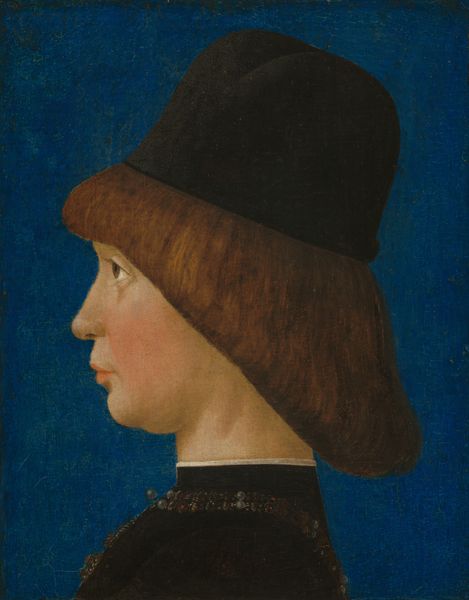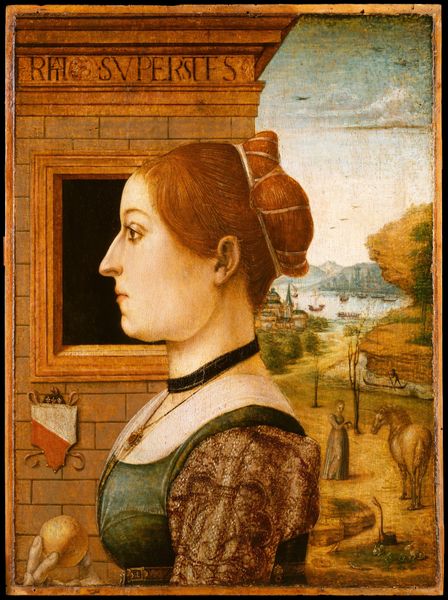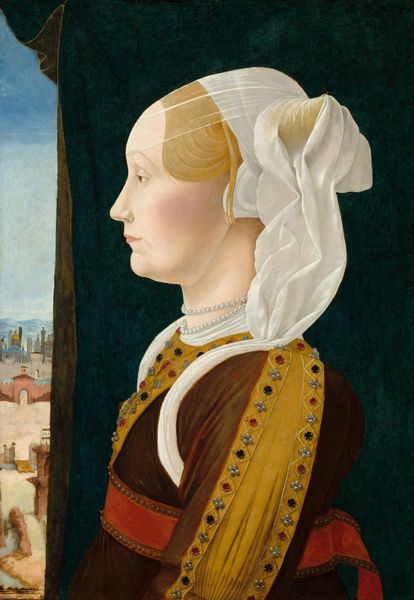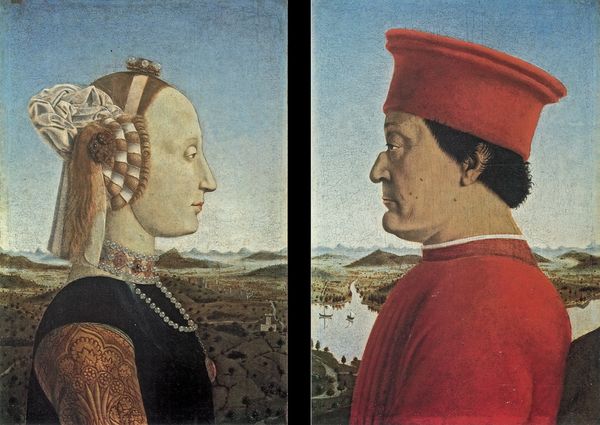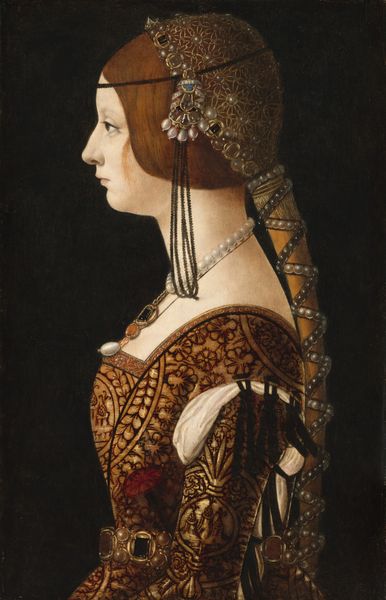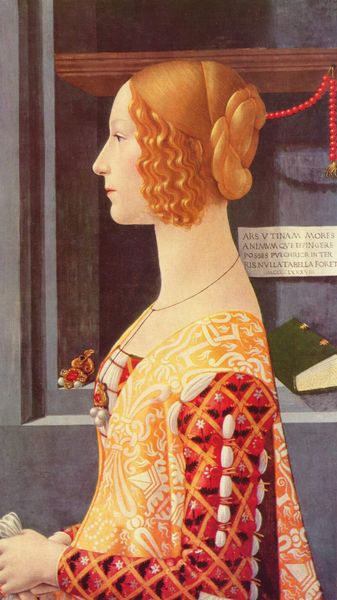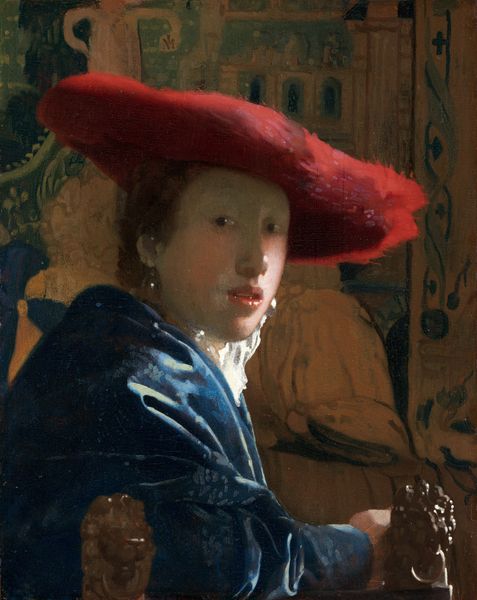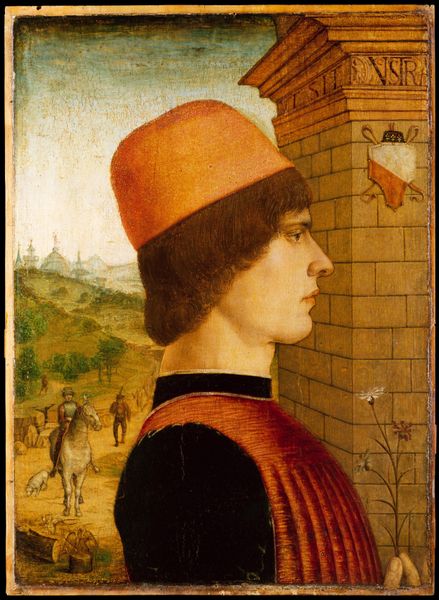
tempera, oil-paint
#
portrait
#
high-renaissance
#
tempera
#
oil-paint
#
figuration
#
oil painting
#
history-painting
#
italian-renaissance
#
portrait art
#
fine art portrait
Dimensions: overall: 54 × 38.1 cm (21 1/4 × 15 in.) framed: 83.82 × 66.68 × 12.7 cm (33 × 26 1/4 × 5 in.)
Copyright: National Gallery of Art: CC0 1.0
Editor: Here we have Ercole de’ Roberti's portrait of "Giovanni II Bentivoglio," made with tempera and oil paint around 1474 to 1477. I'm struck by the contrast between the delicate rendering of his face and the incredibly ornate, almost textile-like pattern of his robe. What do you see when you look at this piece? Curator: For me, this portrait isn't just about the man, but about the means of portraying power through material display. Look closely at that robe. Its creation demanded a skilled artisan class – weavers, dyers, tailors – all contributing to this visual statement. How does the materiality of that robe contribute to Bentivoglio’s image? Editor: Well, it definitely signifies wealth and status. All that gold would have been incredibly expensive, right? It makes him seem almost… untouchable. Curator: Exactly! And that "untouchability" is directly linked to the exploitation of labor involved in acquiring and crafting these materials. Think about the trade routes, the extraction of precious metals, the conditions under which those fabrics were made. The painting becomes a record of these social relations. The artist becomes another craftsman too, deploying skills learned from other artisanal practices of his period. How do you think the tempera and oil combination serves in this depiction? Editor: I guess combining both would offer the best of both worlds... Detail from tempera, but depth from oils. It's interesting to consider the value placed on that type of technical expertise itself, and how that has changed so radically through time. Curator: Precisely. Consider the market for portraiture at the time, the guilds Roberti was part of, the social standing this commissioned work brought him! Thinking about the context surrounding the work gives us far more insight into it, and Giovanni himself! Editor: That makes perfect sense! I hadn't considered the artistry as tied to something much bigger. Thanks! Curator: Likewise, your perspectives highlighted how deeply ingrained the economic reality is in something seemingly 'purely' aesthetic.
Comments
No comments
Be the first to comment and join the conversation on the ultimate creative platform.

